The 200-mile club of electric vehicles is really growing. The most recent member is the Jaguar I-Pace, the company's first pure EV. It promises luxury, performance, style, and most important, good range. Nearly as recent is the Hyundai Kona EV, and while it doesn't promise luxury or performance like the Jaguar (it's also smaller), it does pack impressive range.
With the introduction of both of these electric cars, we thought we would see how they compare against each other, and the other two big names in high-capacity electric cars: the Chevy Bolt EV and the Tesla Model 3. This isn't intended to be a direct, apples-to-apples comparison, as the four are quite different. If anything, they break into two groups: bigger and more luxurious, and smaller and less expensive. Then again, the number of vehicles with this electric range is small and comparisons to EV's with less range wouldn't be too kind to the other guys.
If you want to learn more about these EVs, and compare them with other cars, be sure to check out our Car Finder and comparison tools.
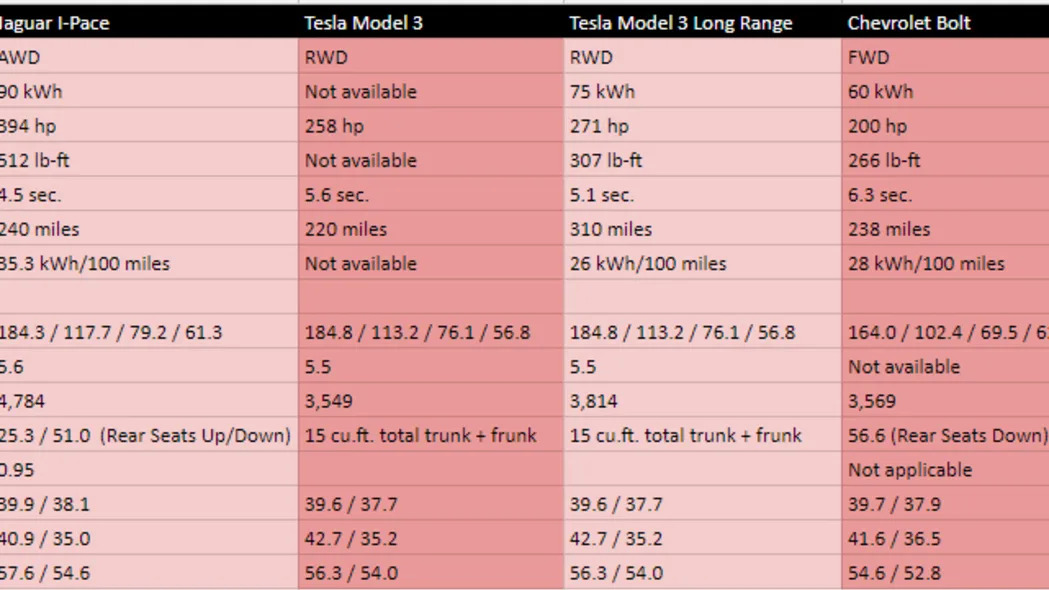
Less talked about is energy consumption, which is measured in kWh/100 miles. In the same way that battery range is similar to how big your fuel tank is, governing how far you can go before refueling, energy consumption is the electrical equivalent of miles per gallon. It's how efficient the car is at using power. It also gives you an idea of how much it will cost to charge the car. We only have numbers for the Bolt EV, Model 3, and the I-Pace, and the Chevy and Tesla are neck-and-neck at 28 and 26 kWh/100 miles respectively. The Jaguar is far hungrier than those at 35.3 kWh/100 miles, but that's perhaps to be expected when it weighs about 1,000 pounds more than the others, and has far more power and torque.
Inside, the Jaguar I-Pace has a slight advantage in head and shoulder room, but actually is a tad tight on legroom. The front legroom champ is the Tesla Model 3, and the Chevy Bolt EV wins for rear legroom. The Bolt EV is also the best cargo hauler with 56 cubic feet of space with the seats down, followed by the Jaguar. Both are akin to one of the smaller compact SUV's. The Model 3 is the least capacious with just 15 cubic feet of cargo space, but note that's a combined figure between its rear cargo area and its front trunk (aka frunk). Jaguar broke out the I-Pace's cargo figures.
With the introduction of both of these electric cars, we thought we would see how they compare against each other, and the other two big names in high-capacity electric cars: the Chevy Bolt EV and the Tesla Model 3. This isn't intended to be a direct, apples-to-apples comparison, as the four are quite different. If anything, they break into two groups: bigger and more luxurious, and smaller and less expensive. Then again, the number of vehicles with this electric range is small and comparisons to EV's with less range wouldn't be too kind to the other guys.
If you want to learn more about these EVs, and compare them with other cars, be sure to check out our Car Finder and comparison tools.

Horsepower and torque
There is one clear winner here, and that's the Jaguar I-Pace. It packs a whopping 394 horsepower and 512 pound-feet of torque. That comes through a pair of electric motors (one at the front, another at the rear) that provide the Jag with all-wheel drive, the only one of these vehicles to offer it (at the moment). Altogether, it allows the I-Pace to have the best 0-60 mph time of 4.5 seconds. At the other end of the spectrum is the Hyundai Kona EV. It's front-drive, like the Bolt EV, and has effectively the same amount of horsepower as the Chevy at 201 horsepower, but its 0-60-mph time is almost a second slower. And the low-range version of the Kona, excluded because it doesn't go more than 200 miles between charges, is slower still. The Tesla Model 3 is the only vehicle with rear-wheel drive, and with a 0-60 mph of 5.1 seconds for the Long Range model, it is still very quick.Range and energy use
Frequently, the all-consuming question with electric cars is, "How far can I go on a charge?" And to go the farthest, you need the long-range Tesla Model 3. It can go 310 miles. It has the added advantage of being able to use the network of Tesla Supercharger stations, though they are pay-per-use with the Model 3. Even the lower capacity Model 3, with just 220 miles of range, can use these stations. Interestingly, the second-best range comes from the long-range Hyundai Kona EV, which can go 292 miles between charges. The Chevy Bolt EV and the Jaguar I-Pace are roughly tied at about 240 miles apiece. Also worth noting is that all of these non-Teslas can take advantage of DC fast charging, which can restore a large percentage of charge in less than an hour.Less talked about is energy consumption, which is measured in kWh/100 miles. In the same way that battery range is similar to how big your fuel tank is, governing how far you can go before refueling, energy consumption is the electrical equivalent of miles per gallon. It's how efficient the car is at using power. It also gives you an idea of how much it will cost to charge the car. We only have numbers for the Bolt EV, Model 3, and the I-Pace, and the Chevy and Tesla are neck-and-neck at 28 and 26 kWh/100 miles respectively. The Jaguar is far hungrier than those at 35.3 kWh/100 miles, but that's perhaps to be expected when it weighs about 1,000 pounds more than the others, and has far more power and torque.
Exterior and interior dimensions
Of course, electric cars are still cars, and their practicality and overall size are important details. The Jaguar is the widest and has the longest wheelbase, and the Tesla is just a tad longer overall. The Chevy and the Hyundai are significantly shorter in length and a fair bit narrower than the I-Pace and Model 3, with taller overall heights. The I-Pace may be taller than the Model 3, which is quite clearly a car, but it still doesn't exactly reach what most would consider SUV heights.Inside, the Jaguar I-Pace has a slight advantage in head and shoulder room, but actually is a tad tight on legroom. The front legroom champ is the Tesla Model 3, and the Chevy Bolt EV wins for rear legroom. The Bolt EV is also the best cargo hauler with 56 cubic feet of space with the seats down, followed by the Jaguar. Both are akin to one of the smaller compact SUV's. The Model 3 is the least capacious with just 15 cubic feet of cargo space, but note that's a combined figure between its rear cargo area and its front trunk (aka frunk). Jaguar broke out the I-Pace's cargo figures.
How they compare in pictures
Jaguar I-Pace
Tesla Model 3
Chevrolet Bolt
Hyundai Kona Electric
Conclusions
Really, the Bolt and Kona were put here for some context. The real contest here is between the new I-Pace and Model 3. One thing we didn't mention was when you might be able to get one. Deliveries for Model 3's are still 12 to 18 months away if you ordered one today (and even that might be iffy), whereas I-Pace deliveries are estimated to begin in the second half of 2018 with the order books open as of today. So, you'd probably get the I-Pace sooner, and judging by the chart above, it certainly compares favorably to Tesla's entry-level model.
Related Video:
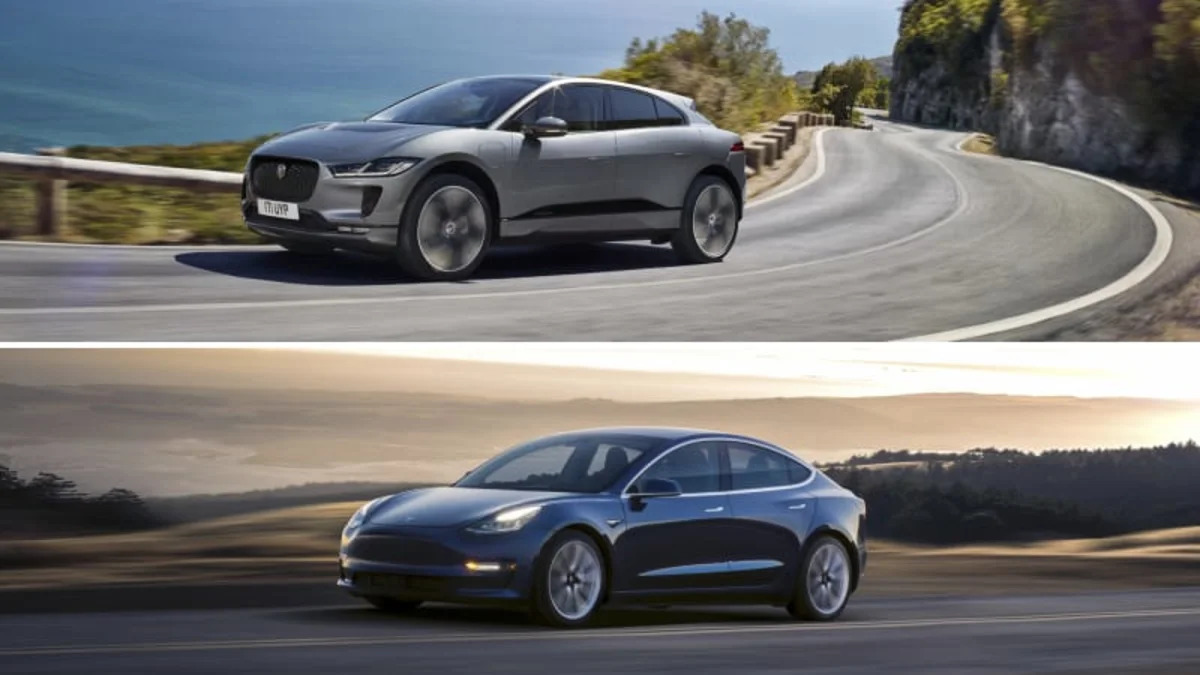
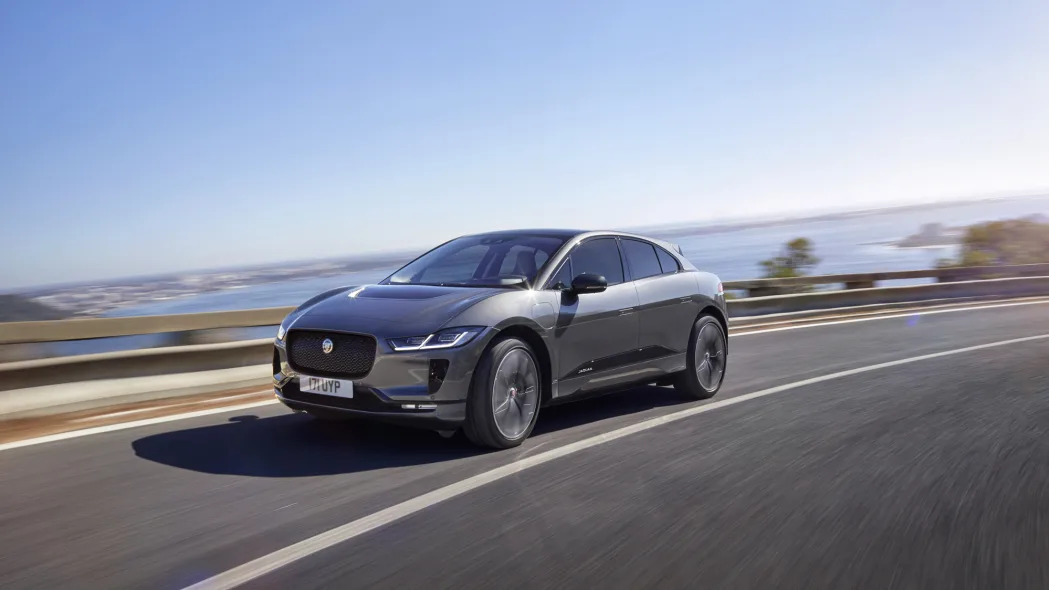
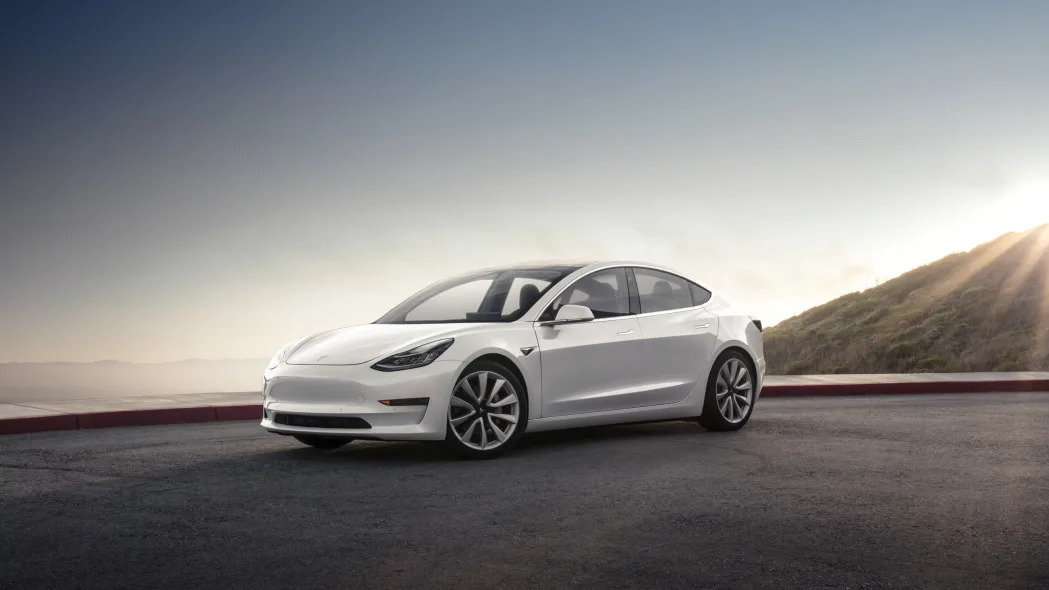

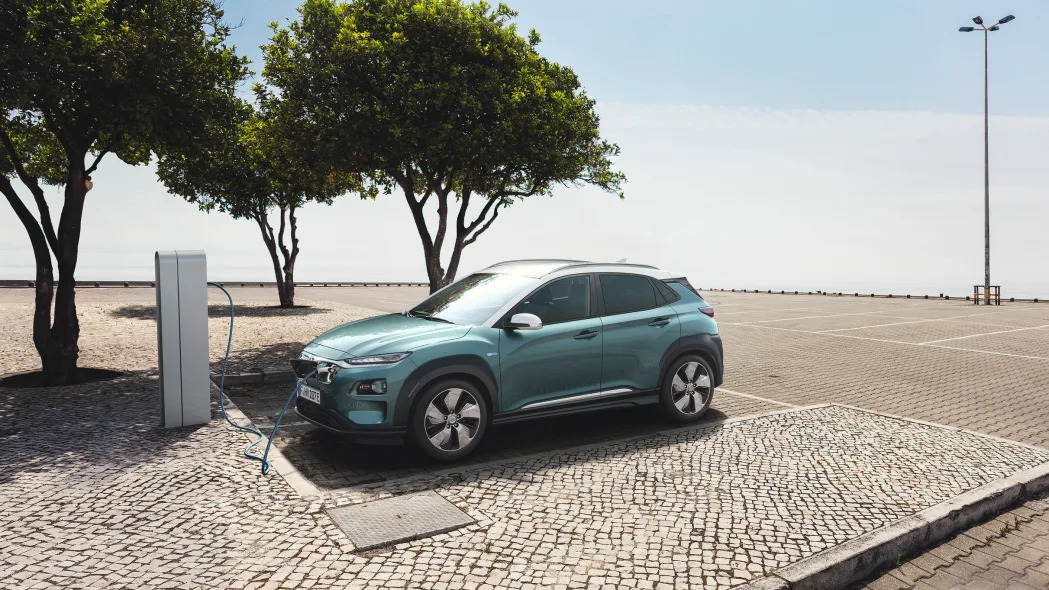

Sign in to post
Please sign in to leave a comment.
Continue